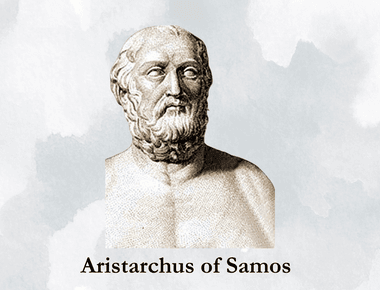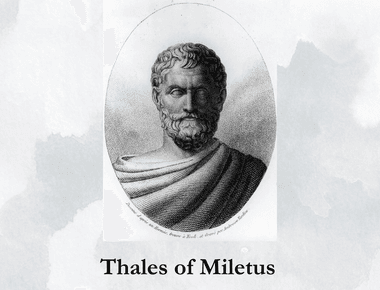
Hipparchus of Rhodes: Rediscovering Ancient Astronomical Wisdom

Table Of Contents
Greek civilization homed dozens of conspiratorial geniuses in the ancient world. Hipparchus was a notable member of that great community. He lived in Rhodes during the 2nd century BC. Claudius Ptolemy described him as the ‘Lover of Truth’. As one of the most distinguished mathematicians ever lived, he made many notable contributions in the fields of Astronomy, Geography, mathematics and philosophy. The Discovery of Trigonometry was the most extraordinary academic achievement in his life. Even though much of his work hasn’t endured so far, there are plenty of indirect pieces of evidence regarding him in the writings of many scholars after him. The discoveries of Hipparchus exerted a strong influence on medieval science where some of his concepts are still in use.
Early life
The birthplace of Hipparchus isn’t much clear but historians believe he was born somewhere in Nicea of Bithynia. But most of his life was spent on the island of Rhodes in Greece. There aren’t many details about his early life because there isn’t a biography written for him from that time. According to historians this great astronomer/mathematician died in Rhodes around 127 BC.
Records and Observations
Hipparchus observed and recorded various natural phenomena during his life. Various scholars around the globe utilized these records since they were rich in great qualities like accuracy, continuity and consistency. Astronomical observations made by him played a vital role in the development of astronomy during the following centuries. In the process of creating the Almagest, Ptolemy used more than 20 observations made by Hipparchus.
Since the 4th century BC astronomers have been recording weather patterns hoping to compile them with celestial behaviours. In his young life, he continued similar research on his terms hoping to identify a pattern between these events. Even though it is believed that he had derived a successful conclusion neither his works nor records have been found so far.
Mathematical Astronomy
Throughout history, Hipparchus has been identified as a great mathematician. He has been recognized as the founder of Trigenometry. He compiled his broad knowledge of mathematics with his observational records and created mathematical models explaining celestial events. These mathematical models were adopted by many astronomers including Ptolemy.
According to statements made by ancient astronomers, Hipparchus had continuously recorded the movement of the sun and moon via coordinates by using his star catalogue as a reference frame. The coordinate system used by him is unknown, but it is believed that he might have recorded the movement of the moon referencing the imaginary great circle called the ecliptic (ecliptic is the hypothetical path followed by the sun, which is stretched across the zodiac.). Using these records Hipparchus was able to determine the distance, size, etc. of these bodies.
After studying his observations Hipparchus discovered a method of calculating the distance, size and displacement of the sun’s orbit by only using just two solistics and equinox dates. By doing so he designed a solar model that could calculate the sun’s location on any date. He also tried measuring the length of the tropical year. His estimation was beyond accurate for that time hence it was only 6 minutes longer than the actual span of the tropical year.
Hipparchus could determine the equinox and solistic for any year. Applying the concept, he calculated the movement of the sun 150 years ago and compared it with ancient solar observations from that time. By doing so he accidentally found stars near the ecliptic had moved 2 degrees eastward relative to the equinox. Further observations revealed that all stars had shown similar eastward movement in the celestial sphere. At first, he assumed they were slow-moving planets but gradually he began to understand this was a result of an effect called precession. His works associated with the precession were later developed by Ptolemy and included in the Almagest.
Understanding the behaviour of the moon was a great deal to Hipparchus. He attempted calculating the distance to the moon using trigonometry. He had been calculating this distance repeatedly countless times. One time using a parallax method, he calculated the distance as 77 Earth radii. he practiced a similar method to calculate the distance to the sun which resulted in a value of 490 Earth radii. The reason for such an error is the inability to measure such a small parallax effect created by distinct objects like the sun in two distinct locations on earth. The most precise calculation of the earth-moon distance involved a lunar and solar eclipse. By using the visually identical size of solar and lunar disks, he approximated the Earth-Moon distance equal to 63 Earth radii (actual distance is 60 radii.). Hipparchus used the time taken for the moon to travel across the earth’s shadow and the time taken to travel across the sun’s disk, for this calculation.
Solar and Lunar model
Like most of the ancient astronomers, Hipparchus also believed in the Geocentric universe. To his planetary model, he introduced the concept of epicycles and differents to explain complex planetary behaviours such as retrograde motion.
Hipparchus tabulated the location of the sun and used it to generate a solar model which could calculate the dates of future astronomical events. His solar model possessed the capability of determining the location of the sun to any date at any time.
Historical records also showed that Hipparchus had been tabulating the moon. Calculating lunar behaviours precisely was his primary objective. The moon has had a puzzling behaviour around the ecliptic since the tilt of its orbital plane. Because of this Hipparchus was unable to produce an efficient lunar model. However, his work regarding the moon was continued and finished by Ptolemy around 150 AD.
Although he was able to discover an efficient solar model, he hasn’t been working on planetary motion. According to him, they were complex to study therefore there hasn’t been a planetary theory by Hipparchus.
Surviving works and Books
Most of Hipparchus’s works didn’t survive up to the present. But some numerous antique documents have been derived from the initial works of Hipparcus. The greatest astronomical chronicle of all time, the Almagest is an example of such derivations.
Records from Pliny the Elder show a comprehensive star catalogue that belongs to Hipparchus. The number of stars, constellations, and coordinate systems in this catalogue is unknown hence there aren’t many reliable details about it. Around 150 AD Ptolemy catalogued 1022 stars divided among 48 constellations. According to his statements, the majority of the star catalogue he created was descended from the hipparchus’ star catalogue with few adjustments. The star catalogue created by Ptolemy consisted of an upgraded version of a magnitude system invented by Hipparcus himself.
Hipparchus invented a trigonometric system that could calculate a chord length as a function of the subtended angle. This system answers many astronomical geometric problems related to circular paths. But unfortunately, this chord system as well as its trigonometric tables haven’t survived like much of his works. Out of all 14 books written by him, the only surviving book is the ’Tōn Aratou kai Eudoxou Phainomenōn exēgēseōs biblia tria’ which translates to ’Commentary on the Phaenomena of Aratus and Eudoxus‘.
Hipparchus made significant contributions to the understanding of celestial motion. His work laid the foundation for future astronomers, showcasing his meticulous observations and mathematical prowess in advancing the understanding of the cosmos during ancient times.
Related Posts



